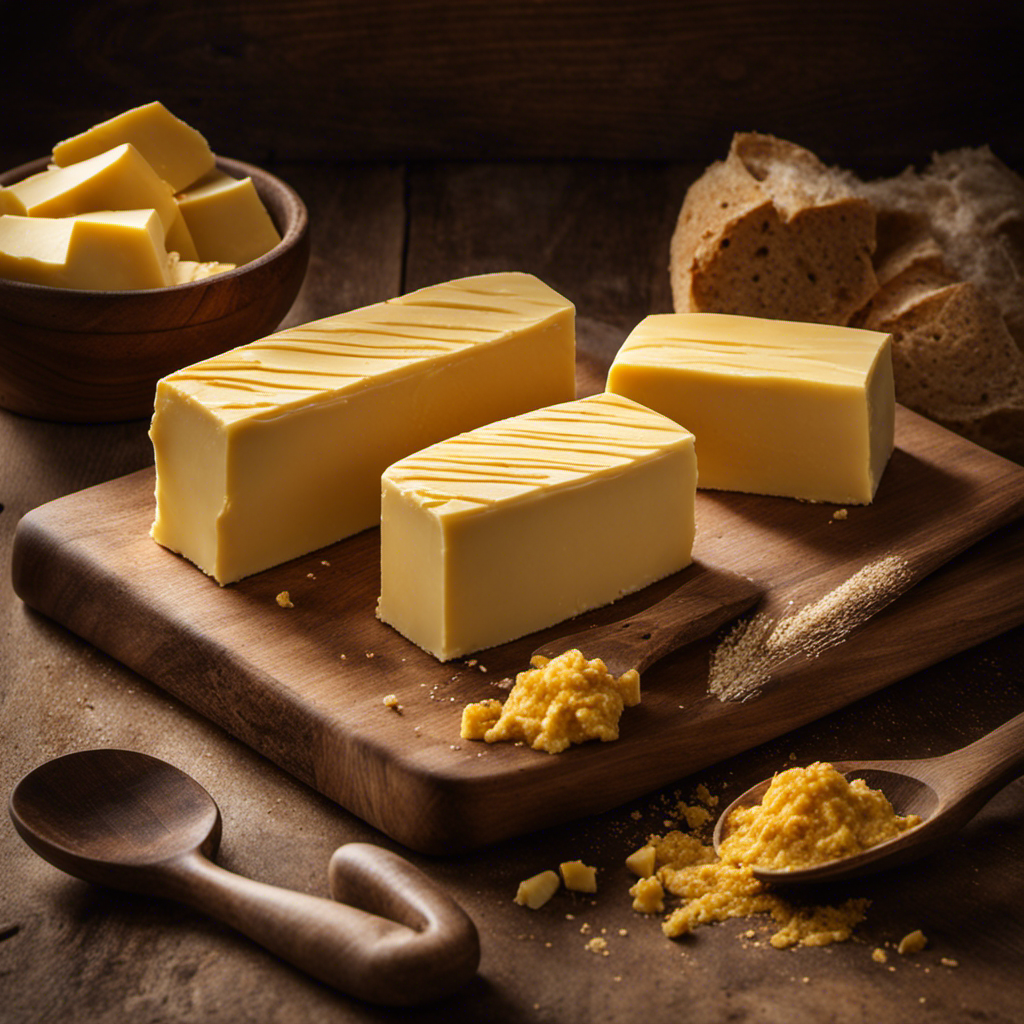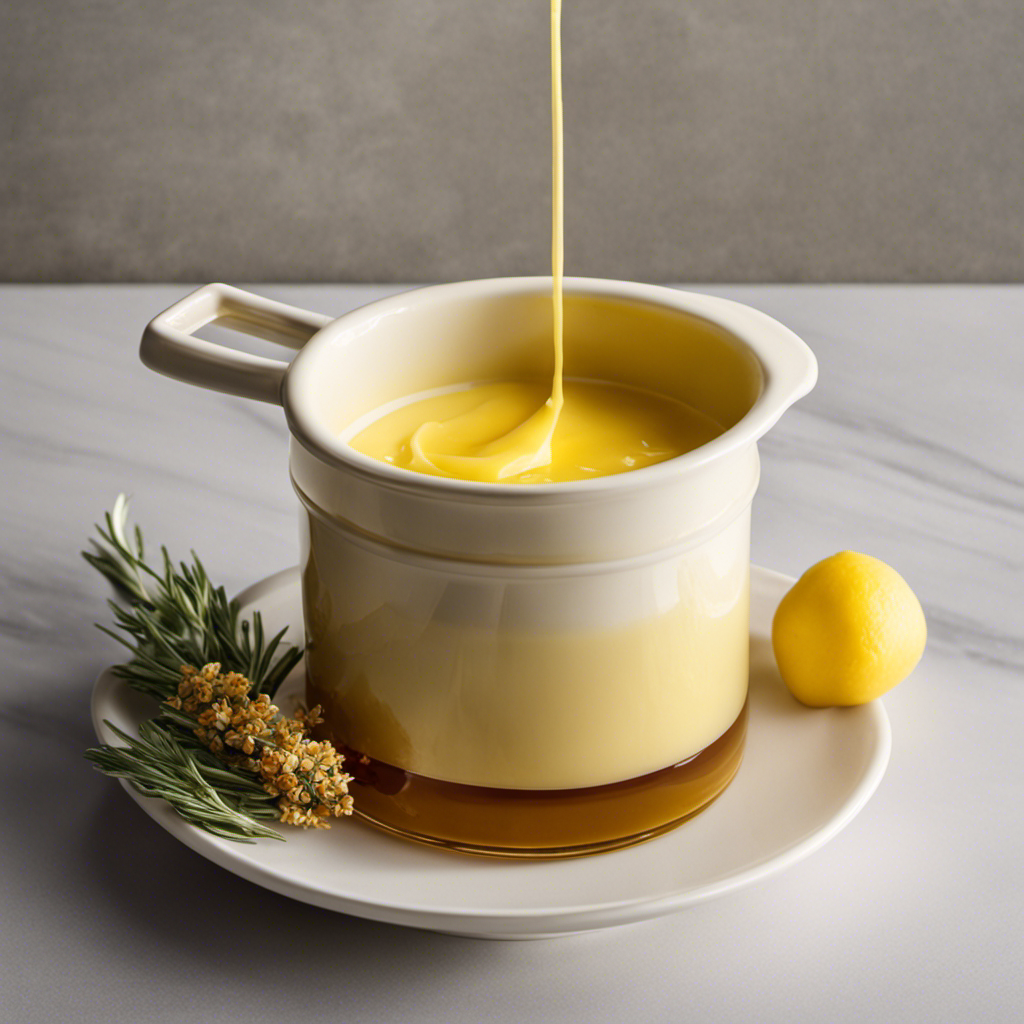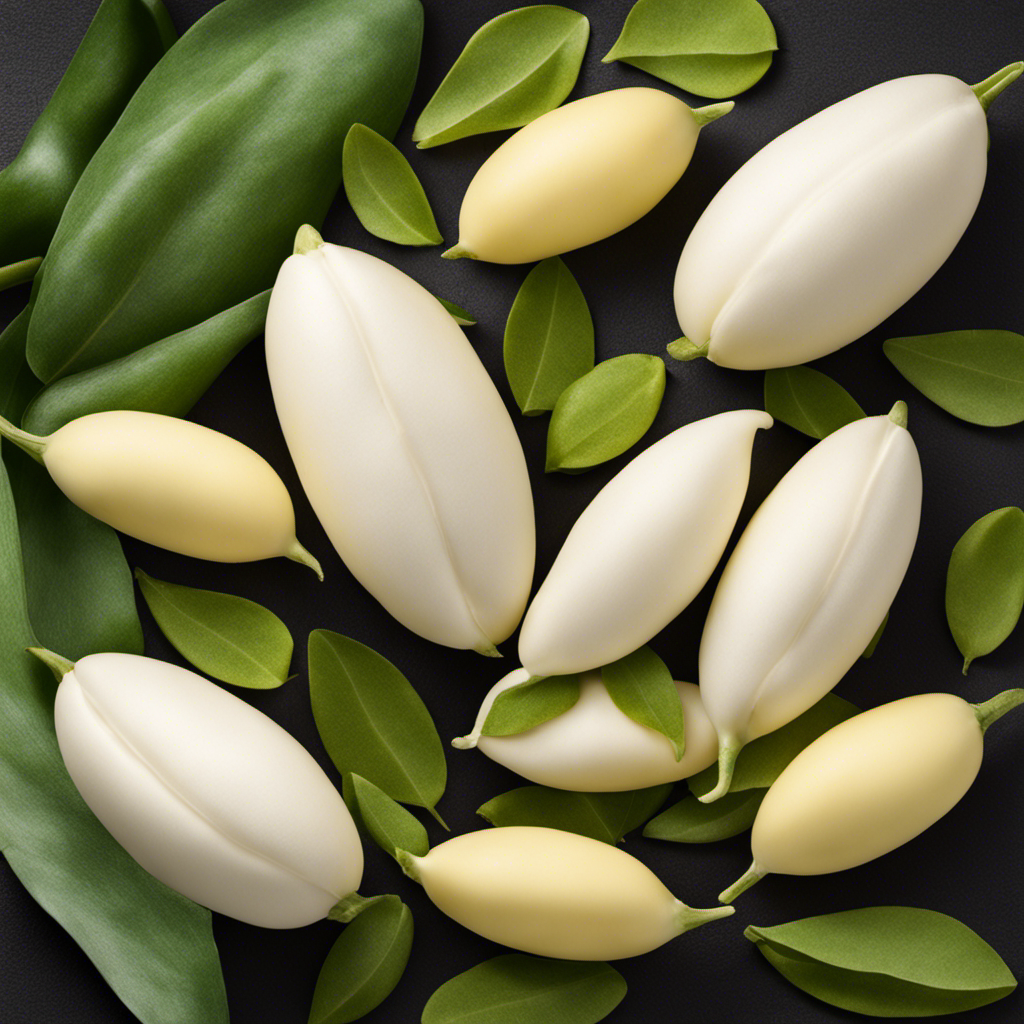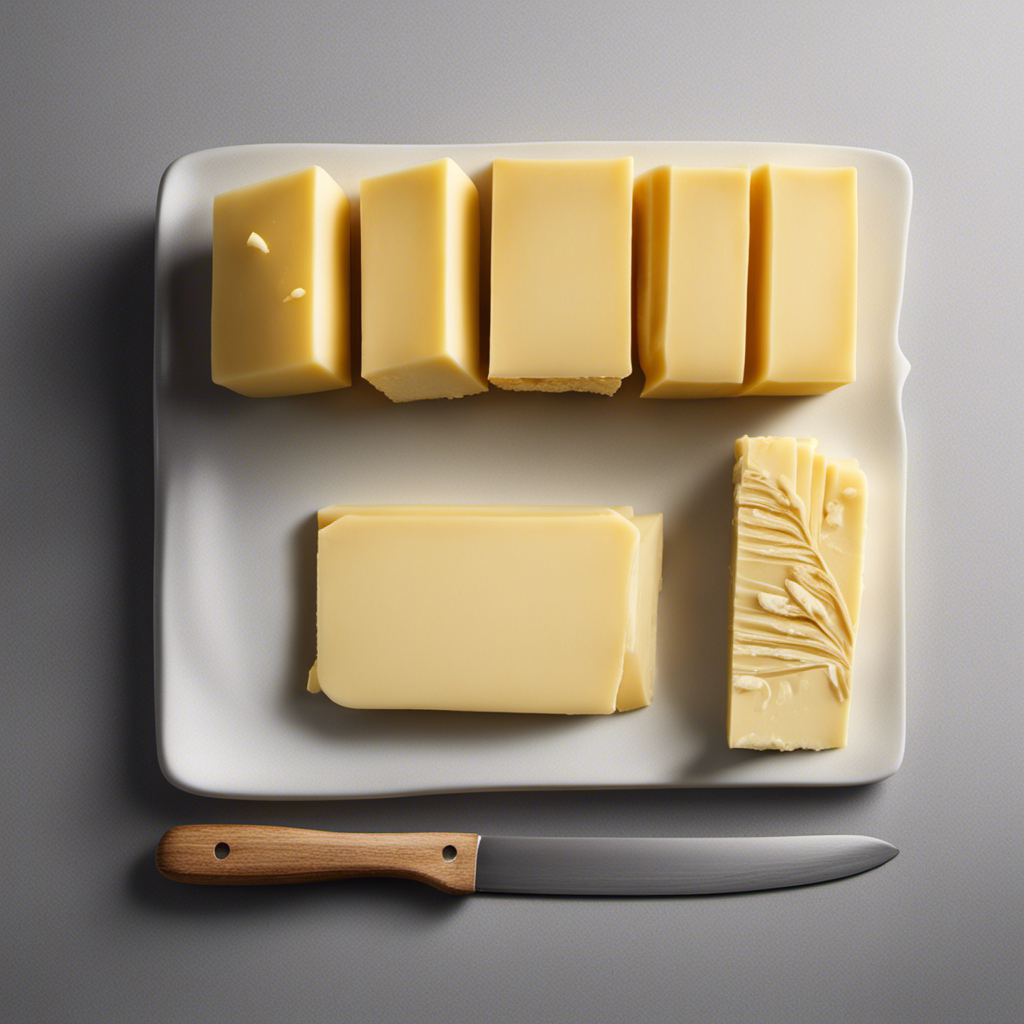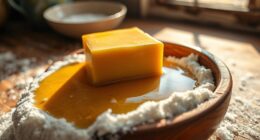I’ve always been curious about how much butter is in 4 ounces. It seems like a simple measurement, but upon closer inspection, it can be quite perplexing.
That’s why I decided to dive into the world of butter measurement conversions and figure out the equivalents of 4 ounces of butter.
In this article, I’ll be sharing my findings and providing tips for accurately measuring butter.
Get ready to become a butter measurement pro!
Key Takeaways
- 4 oz of butter is equal to half a cup.
- Butter is typically sold in 4 oz sticks or 113 gram sticks.
- Margarine, ghee, and coconut oil can be used as substitutes for butter.
- To convert 4 ounces of butter to cups, multiply by 0.125.
Butter Measurement Conversions
4 oz of butter is equal to half a cup. When it comes to measuring butter, it’s important to understand the different measurement units and weight conversions.
Butter is typically sold in sticks, with each stick weighing 4 oz or 113 grams. This measurement is equivalent to half a cup. However, if you don’t have sticks of butter and need to measure using a different unit, it’s helpful to know that 1 cup of butter is equal to 16 oz or 454 grams. Additionally, 1 tablespoon of butter is equal to 0.5 oz or 14 grams.
Understanding these butter measurement units and weight conversions is crucial for accurate and successful baking and cooking. Now that we know the basic butter measurements, let’s dive into a deeper understanding of ounces in butter.
Understanding Ounces in Butter
Do you know how many ounces are in a stick of butter? Well, let me enlighten you. A standard stick of butter typically weighs 4 ounces or 113 grams. However, it is important to note that butter packaging options may vary.
Here are some common options you might come across:
- Sticks: These are the most common and often come in 4-ounce sticks.
- Tubs: Butter can also be found in tubs, usually ranging from 8 to 16 ounces.
- Blocks: Larger blocks of butter are available, usually weighing around 1 pound.
If you’re looking for butter substitutes, there are a few options to consider:
- Margarine: A popular choice made from vegetable oils.
- Ghee: A clarified butter with a higher smoke point.
- Coconut oil: A plant-based option with a unique flavor.
Knowing the equivalents of 4 ounces of butter is useful when following recipes or making substitutions. Now, let’s explore some common alternatives to 4 ounces of butter.
Equivalents of 4 Ounces of Butter
If you’re looking for alternatives, there are a few options to consider when it comes to substituting 4 ounces of butter in a recipe.
One option is to use margarine, which has a similar taste and texture to butter.
Another option is to use coconut oil, which can provide a rich and creamy flavor to your dishes.
Additionally, you can use vegetable shortening as a substitute for butter.
It is important to note that when using these substitutes, the texture and taste of your recipe may vary slightly.
However, with a little experimentation, you can find the perfect substitute that suits your needs.
Converting Butter Ounces to Cups or Grams
To convert ounces of butter to cups or grams, simply multiply the number of ounces by 0.125 for cups or by 28.35 for grams. Converting measurements is an essential skill in the kitchen.
Here are some helpful tips for converting butter ounces to cups or grams:
-
To convert ounces to tablespoons, multiply the number of ounces by 2. For example, 4 ounces of butter is equal to 8 tablespoons.
-
To convert ounces to kilograms, divide the number of ounces by 35.274. For example, 4 ounces of butter is approximately 0.113 kilograms.
-
Remember that 1 cup of butter is equal to 8 ounces or 226.8 grams.
-
When measuring butter, it is important to note that the density may vary. For more accurate measurements, consider using a digital kitchen scale.
-
Online conversion calculators can also be a helpful tool for quick and accurate conversions.
Tips for Accurately Measuring 4 Ounces of Butter
To accurately measure 4 ounces of butter, make sure you have a digital kitchen scale for precise measurements. Measuring butter accurately is crucial for achieving consistent results in baking and cooking. Using a scale eliminates any guesswork and ensures that you are using the exact amount required in your recipe.
Butter measurement techniques can vary, but weighing is the most accurate method. Start by placing a bowl on the scale and zeroing it out. Then, add the butter until it reaches the desired weight of 4 ounces.
If your recipe calls for butter in tablespoons or cups, you can easily convert the weight measurement to volume using conversion charts. Remember, accurate measurements are key to achieving the perfect texture and flavor in your dishes.
Frequently Asked Questions
Are There Any Health Benefits to Consuming Butter in Moderation?
There are health risks associated with consuming butter in excess, but in moderation, it can be part of a balanced diet. The recommended daily intake of butter should be limited to avoid potential negative effects on heart health.
Can I Substitute Margarine for Butter in a Recipe That Calls for 4 Ounces of Butter?
Yes, you can substitute margarine for butter in a recipe that calls for 4 ounces of butter. However, it is important to note that accurate measurement is crucial to ensure the desired outcome.
How Should I Store Unused Butter to Keep It Fresh?
To keep unused butter fresh, store it in an airtight container in the refrigerator. Avoid exposure to air and light, as they can cause spoilage. Use within a few weeks for best quality.
Is It Possible to Freeze Butter for Later Use?
Yes, it is possible to freeze butter for later use. Freezing butter can extend its shelf life up to 6 months. Properly wrap it in an airtight container or freezer bag to prevent freezer burn and maintain its quality.
Can I Use a Kitchen Scale to Measure 4 Ounces of Butter Accurately?
Using a kitchen scale is the most accurate way to measure 4 ounces of butter. However, if you don’t have one, you can use the markings on the butter wrapper or a measuring cup as alternatives.
Conclusion
In conclusion, understanding the measurement conversions for butter is crucial when following recipes. 4 ounces of butter is equivalent to 1/2 cup or 113 grams.
It’s important to note that accurate measuring is essential for the success of your dish. Interestingly, studies have shown that using precise measurements, such as weighing ingredients, can significantly improve the outcome of baked goods.
So next time you’re baking, make sure to measure your butter accurately for the perfect result!

